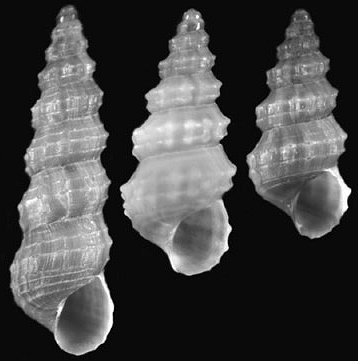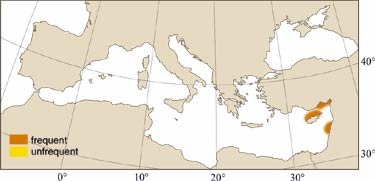
|
Relevant Synonyms
Misidentification
|
|
| photo: S. Gofas / Coll. B. Galil |
|
SHORT
DESCRIPTION
color :
brown on the early whorls grading to pale whitish on the body whorl, with the columella usually tinged with brown; some specimens entirely brown.
common size :
3 x 0.9 to 4 x 1.1 mm. |
DISTINGUISHING CHARACTERISTICS
BIOLOGY / ECOLOGY
habitat :
on soft bottoms, sandy or muddy, in 5-30 m. |
|
1st
Mediterranean record
|

|
|
DISTRIBUTION
|
ESTABLISHMENT SUCCESS
speculated reasons for success :
|
|
|
MODE OF
INTRODUCTION |
IMPORTANCE TO
HUMANS |
|
KEY
REFERENCES
|
|
|
 Dunkeria fusca A. Adams, 1860
Dunkeria fusca A. Adams, 1860